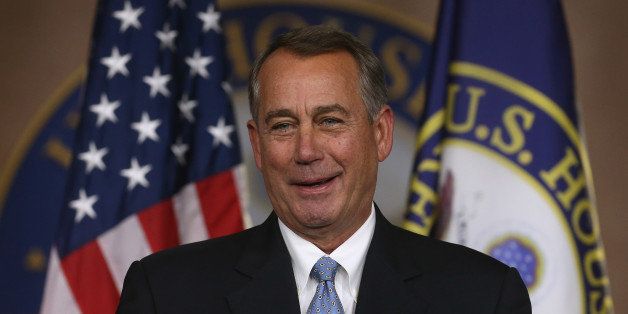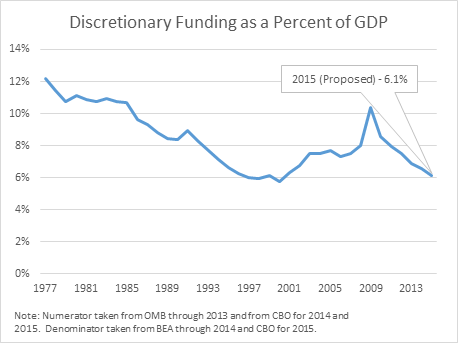
If you Google "massive budget bill" you get a lot of hits.
"House...Approves Massive Spending Bill"
"Congressional leaders unveiled a massive $1.01 trillion spending bill..."
"...the House narrowly passed a massive spending bill late Thursday"
"A massive federal spending bill finally won the House's approval Thursday night..."
I fear such language is massively misleading.
True, the CRomnibus, the nickname of the bill to fund the federal government through next September, runs to over 1,600 pages. But I suspect most readers will associate the "m" word with massive amounts of government spending, and that's just plain wrong.
The budget bill that passed the House would appropriate $1.10 trillion, which is actually a slight cut from CBO's most recent estimate of this type of spending for FY 2014 ($1.13 trillion), and that's before accounting for inflation.
More important, as the figure below shows, scaled by the size of the economy, this proposed appropriation for 2015 is an historical low point. And I'd strongly argue that such context--scaling by GDP as opposed to citing "trillions"--is essential.
This bill funds both defense and non-defense discretionary programs, the latter of which we rely upon for "a wide range of functions and services, including law enforcement and courts, homeland security, veterans' medical care, scientific and medical research, public health, education, housing assistance, national parks, environmental protection, basic operations of government such as tax collection and personnel management, and many others." As the economy grows, the magnitude of many of these challenges grows as well, so we'd expect the dollar value of what we spend on them to go up.
In fact, given the basic needs we face in many of these areas and noting their historical funding levels, 6.1% of GDP may well be too low. For example, this funding averaged about 10.2% of GDP under Reagan, about 8.5% under Bush I, about 6.4% under Clinton, and about 7.3% under Bush II.
So I'd urge fellow scribblers about these matters to retire "massive" and place these expenditures in both historical and GDP contexts.

Source: CBPP
This post originally appeared at Jared Bernstein's On The Economy blog.
